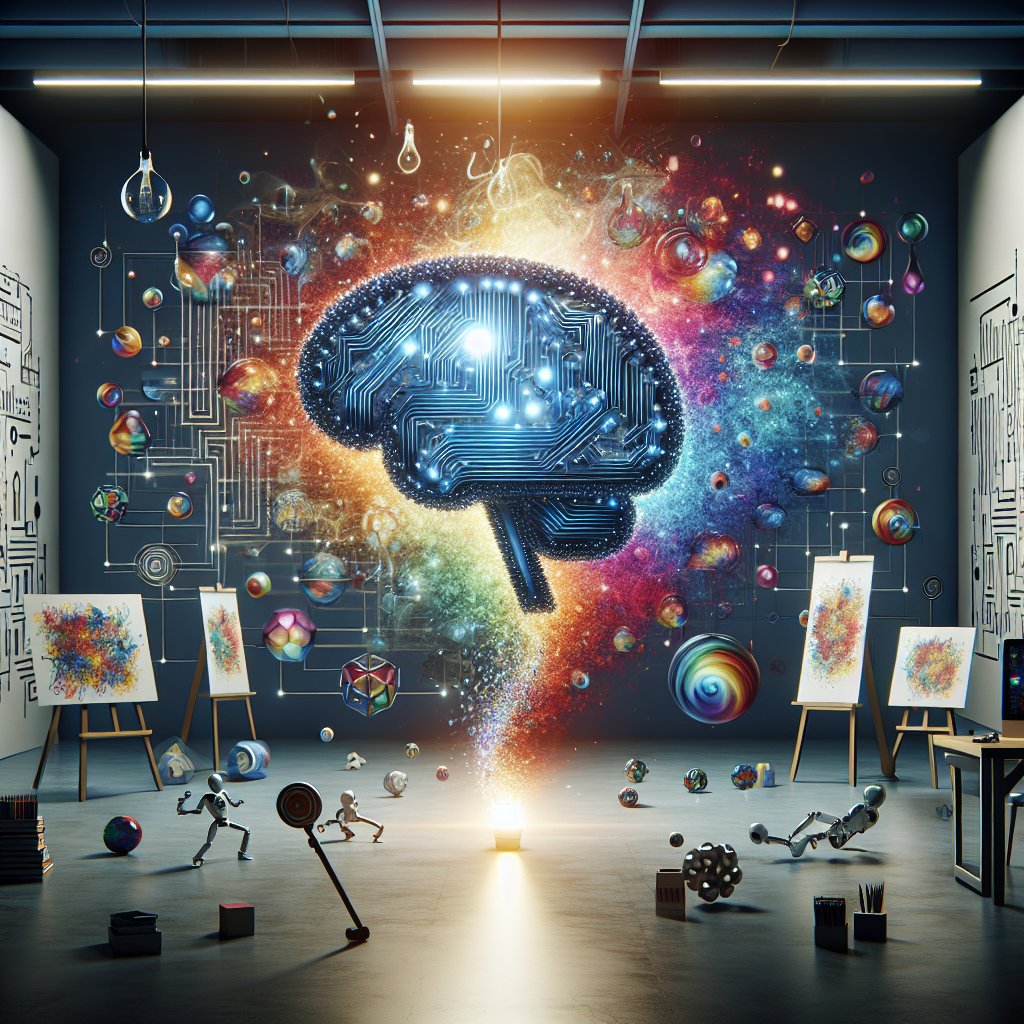Artificial Intelligence (AI) has been making waves in various industries, revolutionizing the way we work, communicate, and even create. One of the most intriguing aspects of AI is its ability to foster creativity and innovation, challenging the traditional notions of what it means to be creative. The intersection of AI and creativity has opened up a world of possibilities, allowing for new forms of expression and pushing the boundaries of what is possible in the realm of art and innovation.
The Art of Innovation
AI has long been associated with tasks that require logical reasoning and problem-solving abilities. However, in recent years, AI has been making significant strides in the creative sphere, producing stunning works of art, music, and literature that rival those created by human artists. This has led to a re-evaluation of the role of AI in the creative process, with many experts arguing that AI can actually enhance human creativity rather than replace it.
One of the key ways in which AI is revolutionizing creativity is through the use of generative algorithms. These algorithms are programmed to generate new ideas, concepts, and designs based on a set of parameters provided by the user. By leveraging the power of machine learning and deep learning, AI can analyze vast amounts of data and identify patterns and trends that humans may not be able to discern. This allows AI to come up with novel and innovative solutions to complex problems, inspiring human creators to think outside the box and explore new possibilities.
AI is also being used to augment human creativity in the fields of art, music, and design. For example, AI-powered tools like deepdream and neural style transfer can transform ordinary images into surreal works of art, while AI-generated music compositions can evoke emotions and tell stories in ways that traditional music cannot. These tools are not meant to replace human artists, but rather to complement their abilities and inspire them to push the boundaries of their creativity.
Another way in which AI is fostering creativity is through the democratization of art and innovation. AI-powered tools and platforms are making it easier for people from diverse backgrounds and skill levels to engage in creative pursuits, whether it be designing a logo, composing a piece of music, or creating a virtual reality experience. This democratization of creativity is empowering individuals to express themselves in new and exciting ways, opening up new avenues for collaboration and exploration.
FAQs
Q: Can AI truly be creative?
A: While AI may not possess the same level of consciousness and self-awareness as humans, it can still exhibit creativity in the form of generating novel ideas, concepts, and designs. AI’s ability to analyze vast amounts of data and identify patterns allows it to come up with innovative solutions to complex problems, inspiring human creators to think outside the box.
Q: Will AI replace human artists?
A: AI is not meant to replace human artists, but rather to complement their abilities and inspire them to push the boundaries of their creativity. AI can help artists explore new possibilities and expand their creative horizons, leading to new forms of expression and innovation.
Q: How can AI foster creativity?
A: AI can foster creativity by generating new ideas, concepts, and designs based on a set of parameters provided by the user. AI-powered tools can transform ordinary images into works of art, compose music compositions that evoke emotions, and help individuals engage in creative pursuits regardless of their background or skill level.
Q: What are some examples of AI-powered creativity?
A: Some examples of AI-powered creativity include deepdream and neural style transfer, which can transform images into surreal works of art, and AI-generated music compositions that tell stories and evoke emotions. AI is also being used to design logos, create virtual reality experiences, and inspire human creators to explore new possibilities.
In conclusion, the intersection of AI and creativity is reshaping the way we think about art and innovation, challenging traditional notions of what it means to be creative. AI’s ability to generate new ideas, concepts, and designs is inspiring human creators to push the boundaries of their creativity and explore new possibilities. By democratizing art and innovation, AI is empowering individuals from diverse backgrounds to engage in creative pursuits and collaborate on projects that were once out of reach. The future of AI and creativity is bright, and the possibilities are endless.

